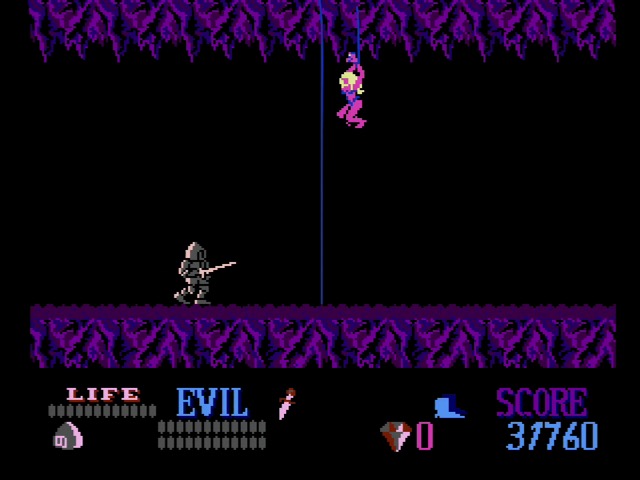Taking an AxROM to Wizards and Warriors
The internet NES fan scene has changed over time. The modern scene I think is a lot more open to Japan-exclusive titles, thanks to the wealth of fan translations, and has different preferences. One game that seems to have fallen through the cracks is Rare’s Wizards and Warriors. It was a hit in its day, but doesn’t seem to get the attention other platformers do. Let’s take a look, and by that I mean, spend most of the time talking about the hardware inside the cartridge. This is “Nicole Express”, after all.
Rarely Wrong
My guess is that the reason for this is that developer: Rare, Ltd. In the 1990s Rare was a powerhouse putting out hit after hit, and that influenced how its past games were seen too. Wizards and Warriors wasn’t just an early NES hit, it was a game whose influences you could see all over N64 games like Donkey Kong 64.

But the mighty have fallen, and after decades of Kinect shovelware and attempts to regain lost glory, Rare tends to get a very different look. Those N64 games haven’t always aged the best anyway. So let’s take a look back with an eye of realism.

Rare Ltd. was the first western developer to really go fully into the NES. They jumped from the world of European 8-bit gaming, as the founding Stamper brothers were already legends of the ZX Spectrum with games like Knight Lore and Sabre Wulf. Therefore, they brought a very different background than the Famicom space dominated by arcade firms, and different characteristics from their game. They didn’t have anything to do with the Famicom Disk System port of Knight Lore, but this is an NES article so I included it anyway.
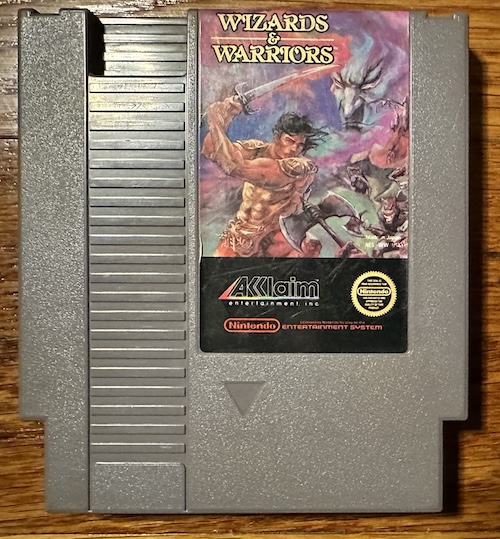
Their first game for the NES was Slalom, released by Nintendo, but Wizards and Warriors, published by Acclaim, might as well be the first game of the Rare the NES would come to know and sometimes even love. Why do I say that? Because it introduced ANROM.
Taking an axe to AxROM
ANROM (or AxROM, to include the very closely related AOROM, ANROM, and AN1ROM boards) is probably the most important mapper on the NES I didn’t talk about in my mapper blog post. But it’s not the most important Famicom mapper I didn’t talk about. AxROM is where the western and Japanese markets really diverge; if a game was a western exclusive, odds are pretty good this is the mapper they used.
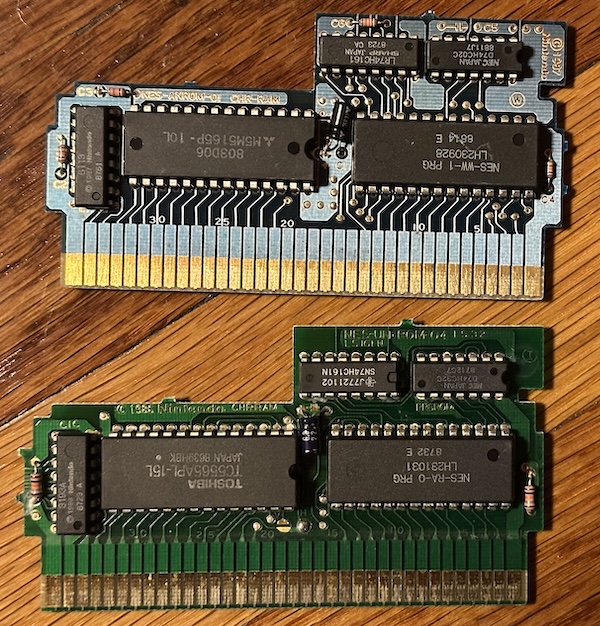
ANROM (top) looks pretty similar to UNROM (bottom). But they work very differently. I’m not sure who designed the mapper– certainly the circuitboards are made by Nintendo. But I wouldn’t be surprised if the concept was the product of Rare’s reverse engineering efforts; despite being a simple discrete logic mapper, AxROM fundamentally changes the way the NES works.
PRG banking
The PRG banking is as simple as can be, and is not the interesting part. But in 1987 a 1 megabit ROM was still pretty impressive. AxROM banks in 32kiB pages; no fixed bank like The Guardian Legend’s UNROM. This makes it a little harder to code for, but this can be dealt with easily enough by a skilled programmer with the right tools. And that meant that AxROM required one fewer chip than UNROM.
But Nicole! I hear you cry. There are two discrete logic chips in the above PCB!
That’s correct. This specific variant, ANROM, uses a 74HC02 logic chip (4 NOR gates) to avoid bus conflicts. This simplified bankswitch programming compared to UNROM, making up somewhat for the complexity of 32kiB banks. But that wasn’t necessary; in fact, later members of the AxROM family ditched the 74HC02. For example, here’s AOROM used by IronSword: Wizards and Warriors II.
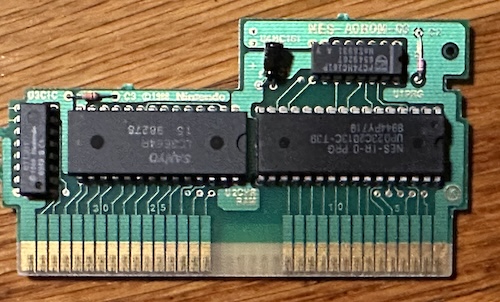
Games using these simplified PCBs either had to put up with bus conflicts, or used special ROM chips that had an extra chip enable that could be harnessed to avoid bus conflicts without needing the NOR gates. The emphasis on removing bus conflicts is why I wonder if Rare had some say in the design of the mapper; other Nintendo discrete logic mappers like CNROM, GNROM, and UNROM don’t make any effort to avoid them in hardware.
CHR-RAM
CHR-RAM is also not the interesting part– in fact, it’s exactly the same as UNROM. (or Deadly Towers’ BNROM, or Final Fantasy’s SNROM, or the Famicom Disk System, or plenty of other mappers) The cartridge contains 8kiB of static RAM hooked up to the PPU; all of the graphics data is on the program ROM. A nice thing about the Famicom architecture is that it can support RAM or ROM on the PPU bus without any real support hardware on the cartridge.
1-screen nametables
As a software developer, this is the most interesting part. As a refresher, the NES contains 2kiB of internal static video RAM. These are designed to be used for the nametables, which contain the NES tilemap. This RAM doesn’t contain the tiles themselves; just the mapping of how tiles are laid out on the screen, and the attribute tables that determine which colors should be used. One 1kiB table contains enough tiles to fill the full 256x240 screen output of the PPU, so multiple tables are needed for scrolling.

However, the NES scrolling hardware assumes four 1kiB screens worth of tiles; you can see it put to its proper use on the Vs. System arcade line, or in some games like Gauntlet above, that fill it out using on-cartridge RAM. The 2kiB is a cost-saving move; RAM is expensive in 1983. It very quickly got cheaper, but a game console’s hardware is set at release. (At least it was back then) Nintendo’s solution? Nametable mirroring.
The cartridge itself can choose the arrangement of the 1kiB blocks using just traces on the board. Specifically, the two arrangements envisioned are horizontal (used in games like Super Mario Bros.) and vertical (used in Ice Climber). On the NES, it’s very easy to scroll in one direction. Two-direction is a little more complicated.
This mirroring is controlled by the CIRAM pins on the cartridge edge connector. Here’s the Famicom for reference; NES is similar, but with the lockout chip and some more expansion port pins.
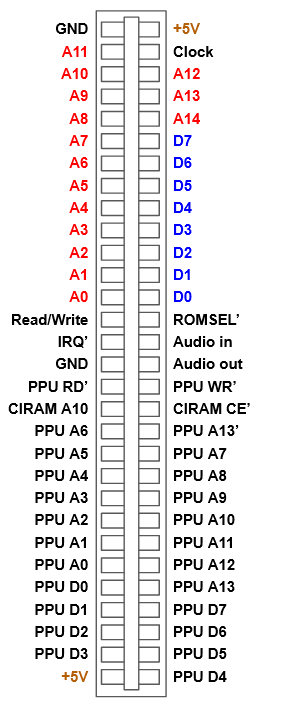
Horizontal arrangement connects CIRAM A10 to PPU A10. Vertical arrangement connects CIRAM A10 to PPU A11. AxROM does something completely different: it connects CIRAM A10 to one bit of the 74161 latch.
What does this mean? It means the game console will only ever see one nametable. It makes the NES into something like the Apple ][, which has two pages of HIRES mode, but only one is displayed at any given time. Of course, unlike Apple, the NES still has scrolling. It’s just that the same nametable will be repeated.
But which nametable is shown can be switched out by the program at will. This simplifies programming quite a bit. You see, the NES has pixel-level scrolling. The four-nametable grid gives a scrollable area of 512x480 pixels; that is, you need 9 bits for the X and Y scroll. By making there only be one nametable, you now only need to deal with 8 bits. 8 bits is easy. The NES’ 6502 CPU is much better at dealing with 8-bit numbers. (Of course, you can’t do things like load your whole level into two nametables, like Lode Runner did)
Let’s take a real-world look at how Wizards and Warriors runs.
Four-way scrolling? In this economy?
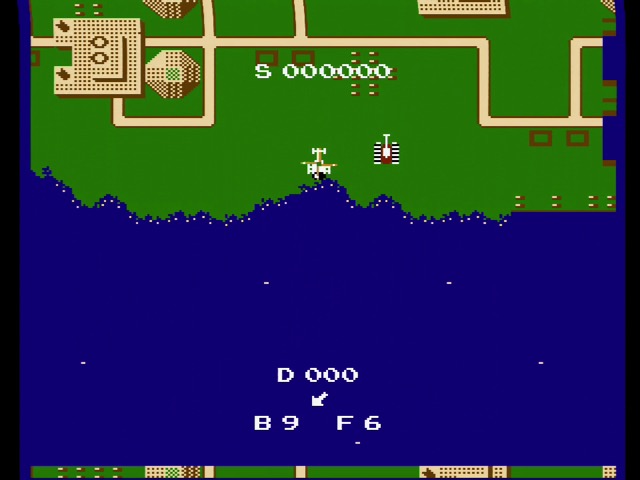
The first game on the Famicom with four-way scrolling was Hudson Soft’s port of Will Wright’s Raid on Bungeling Bay.

The first platformer was Capcom’s Ghosts ‘n’ Goblins (ported by Micronics). Both of these games performed scrolling the same way:
- The nametables are arranged using horizontal mirroring, so horizontal scrolling is straightforward.
- Vertical scrolling artifacts remain at the top and bottom of the screen; parts that on the 240-pixel high NES screen are usually cut off in overscan.
- Permanent fixed UI elements like the score use sprites.
- Sprites are fairly small, so the fact that you can have only 64 sprite pixels per scanline is mostly fine
And here’s Wizards and Warriors:
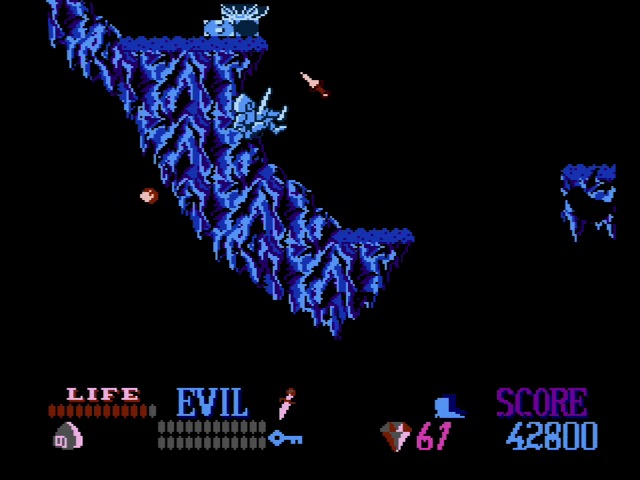
Wizards and Warriors does things differently. A thick status bar with large fonts covers the bottom part of the screen. I’ll talk gameplay details later, but the number of gems you have is very important, so having it always available is nice.
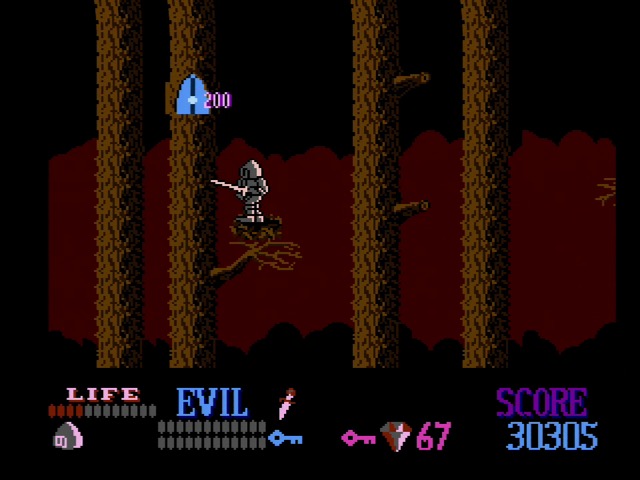
The sprites are big. This almost looks like a console generation’s worth of improvement compared to Micronics’ take on Ghosts ‘n’ Goblins. How did Rare do it?
First off, the gameplay area is one nametable. The NES lets you mask 8-pixels on the left side of the screen, much like the Sega Master System, as I noted in the My Hero article. Vertical scrolling artifacts are covered up by the status bar.
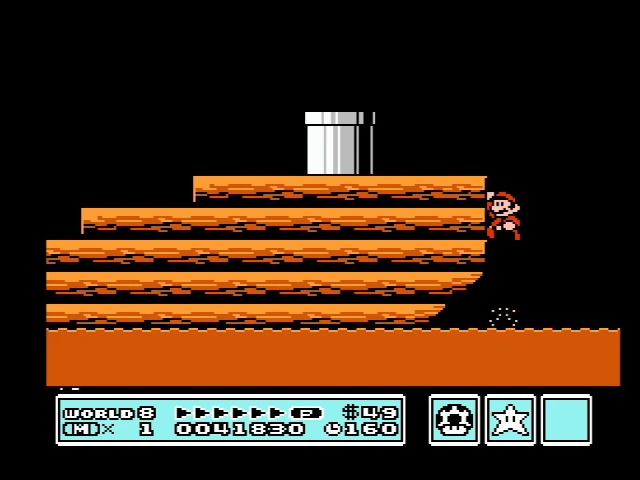
That status bar is a real impressive work of NES programming. Take a look at Super Mario Bros. 3 above. Nintendo used vertical scrolling and an IRQ to signal when a desired scan line is hit. The status bar is always on the bottom of the screen tilemap; Super Mario Bros. 3 limits its vertical scrolling to a fixed height. The engine for Wizards and Warriors can scroll indefinitely in either direction.
Unlike MMC3, Rare has no IRQ, not even those used by Guardic Gaiden. The game is carefully timed around the Sprite 0 Hit. And when that hits, Rare turns off the screen rendering, allowing a new palette to be loaded in. (The Super Mario Bros. 3 status bar uses a palette from the level) Then it switches the scrolling, changes the nametable, and turns the screen back on. It’s a delicate dance.
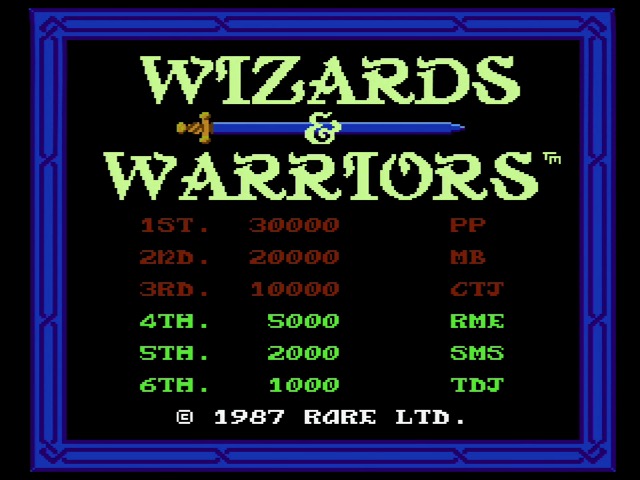
Graphical glitching? No probalo!
If you read my Tengen article, single-screen mirroring sounds pretty familiar. Alien Syndrome did the same thing; however, when Alien Syndrome did it, they had graphical glitches on the side.

This is a hardware limitation of the NES. It lets you mask off an 8-pixel wide area, but color attributes on the NES are limited to 16x16 blocks, so with only one horizontal tilemap available, you’ll always have a visible half a block where things are colored weirdly. Even Super Mario Bros. 3 has to put up with some attribute clash on the side of the screen. That might be masked in overscan, but probably most TVs could see some.
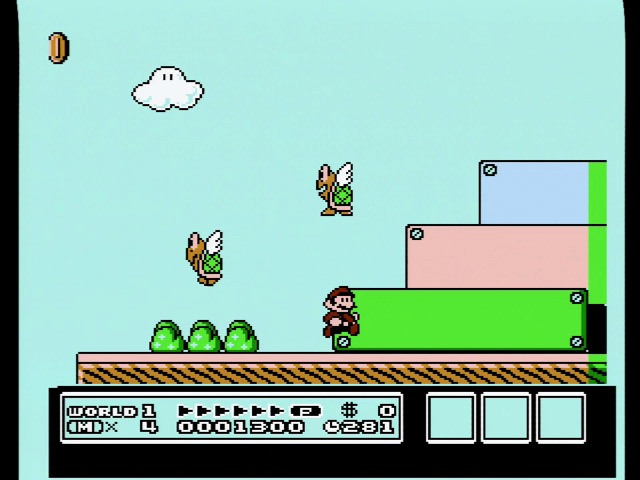
But jump around the very first area of Wizards and Warriors, a colorful forest area that scrolls in four directions, and you won’t see attribute clash at all.
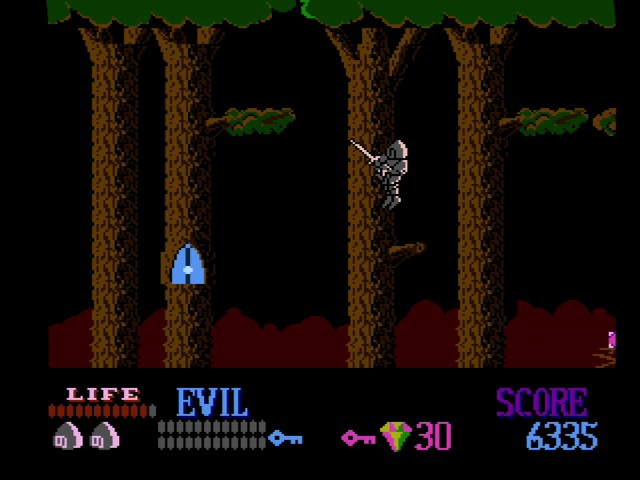
How did Rare do it? They reached back to their history. The Stamper brothers’ prior company, Ultimate Play the Game, really put themselves on the map with Knight Lore. (Shown now on the MSX port, because I have an RGB MSX2– however, this MSX port, like many from the ZX Spectrum, doesn’t use the MSX’s advanced features, so it’s fairly close to the original except playing somewhat worse) This game eliminated attribute clash, which had plagued the ZX Spectrum up until this point, by being fully monochrome in the gameplay area.
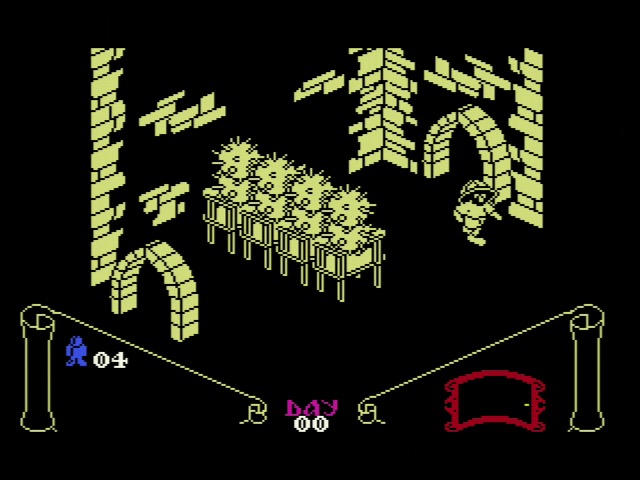
Wizards and Warriors isn’t fully monochrome. But it chooses its attributes cleverly so that they never change on the horizontal axis. (On the vertical axis, edge glitches are covered up by the status bar) In later areas that aren’t as vertical as the forest this does give it a single-color vibe, but since a single NES palette always has at least three colors, it’s never as monochrome as Knight Lore. It’s a simple choice but it works well.

Am I telling you Wizards and Warriors is a better game than Super Mario Bros. 3? No. But I am telling you that even in this, their second title, Rare was already showing some clever tricks and some serious hardware mastery.
Gameplay
First off, all of my screenshots and captures will be from the first two levels. Why is that? Because I built a terrible system of adapters to use the RGB Blaster to capture images, and it got jostled on level 2. Probably should’ve just used the AVS. Wizards and Warriors did in fact get a Famicom release, but it’s got some differences.
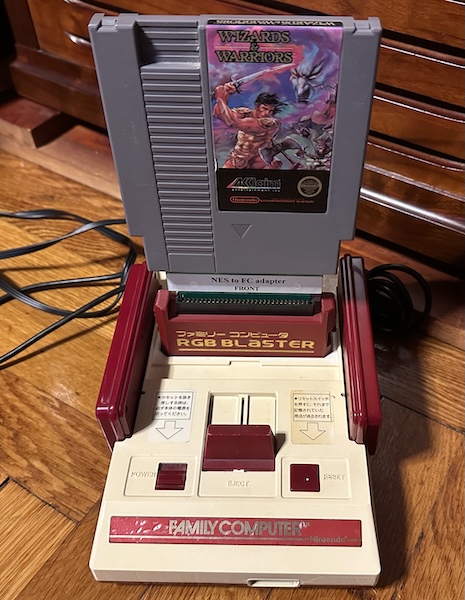
If this was an essay rather than a few musings, here’s what my thesis would be: Wizards and Warriors would be right at home on the Commodore Amiga. It wears its home continent on its sleeve– but thankfully, it’s on a system where you don’t need to press up to jump.

Most prominently, the game consists of large free-scrolling levels. You can’t just go from one side to the other; you need to explore, collecting keys to unlock areas. But unlike contemporary Japanese adventure-platformers, RPG elements and grinding aren’t significant, instead, you need to explore to collect a sufficient number of gems scattered throughout the level to bribe guards. (One of the justifications for that big status bar)

Enemies spawn infinitely, so you can’t just kill all the enemies in an area to make it easier to grab the goodies. And your initial sword is very limited; you can’t even swing it while you jump, and your jump is pretty slippery and awkward to boot. (However, if an enemy hits your sword it will be injured) So a big part of the game is finding various items that will boost your power.
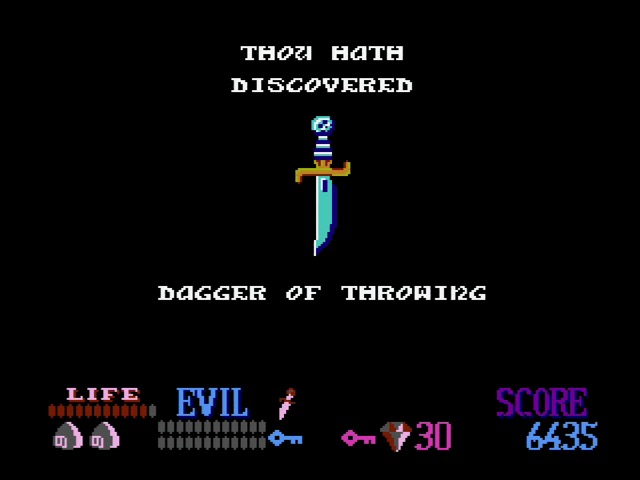
The jump is probably the weakest part of the game. Even on the first stage Rare likes putting narrow platforms on the very edge of your jumping ability, and you can lose a lot of progress very fast by falling back. It’s also not always obvious when you have to jump. Plus, if you jump into a door that you have the key for you always enter it, even if you didn’t intend to. Movement is more clunky than it needs to be; items do help with that, but still.

Falling back is in fact more of an obstacle than dying; in rare fashion for Rare, death is very generous here. Not only do you have a long life bar and multiple lives, but even a continue doesn’t cost you progress, just score. The game really tried to be a score-chaser, but for an adventure like this that’s just not a big motivation.

Overall I definitely think it’s a pretty solid title. And I’m not the only one! This post was actually supposed to just be the first part of a post about a different game entirely, so look forward to that.
